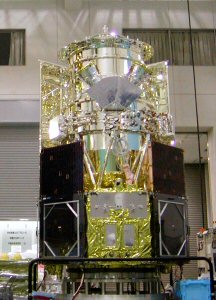The Purpose of the Mission
from "ASTRO-F Mission Plan" (ISAS/JAXA, January 2006)
The main objective of the ASTRO-F infrared astronomical mission is to make an all-sky survey at infrared wavelengths[1] with a sensitivity one order of magnitude better and resolution a few times higher than IRAS (Infrared Astronomical Satellite) which is the first infrared astronomical satellite launched in 1983. ASTRO-F will make a second generation survey which meets current astronomer's expectations.
There are a large variety of scientific targets which will be investigated by ASTRO-F. Especially we focus on the following.
- To understanding the formation and evolution of galaxies.
- To inquire into the formation process of stars and planetary systems.
In order to accomplish these aims, ASTRO-F performs the following observations.
- An unbiased[2] all-sky survey at wavelengths from 50 to 180 microns.
- High sensitivity imaging and spectroscopic observations covering more than several tens of square degrees at wavelengths from 2 to 180 microns.

- Infrared ray is the generic name for electromagnetic waves which have wavelengths longer than visible light and shorter than radio waves.
- The observed area is not selected under any prior criteria beforehand in the case of ASTRO-F.





